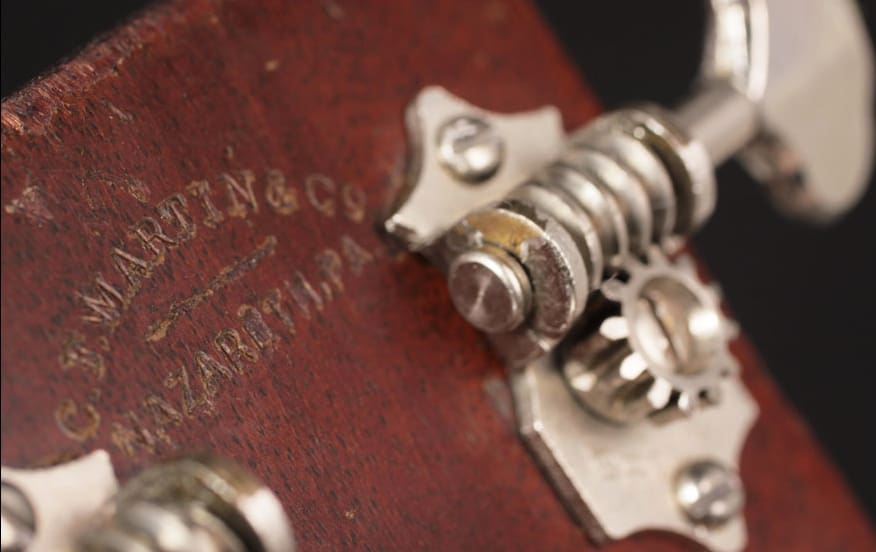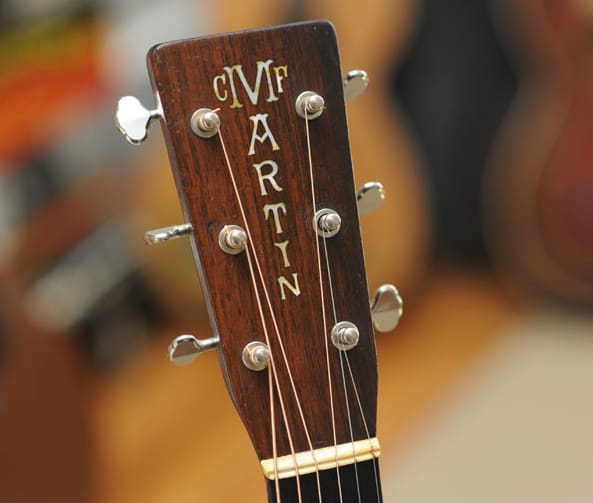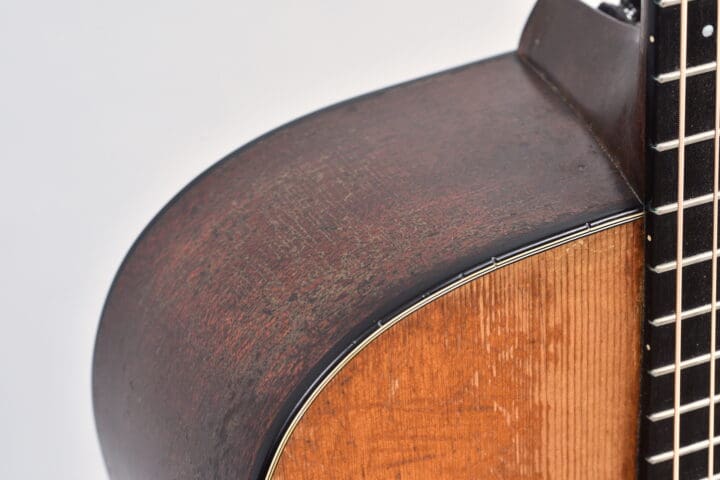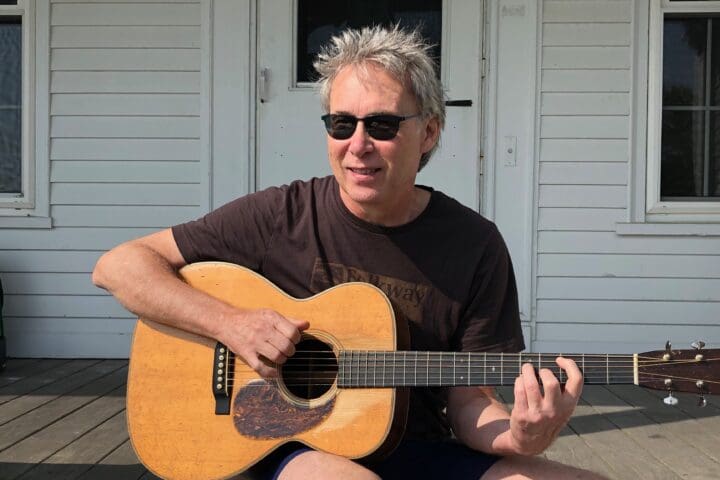1932 Martin C-1
A while ago I posted about a 1932 Martin C-2 that had a caved-in top that was converted into an OM-28 by Mark Stutman at Folkway Music. Martin’s archtops are not particularly common but as they aren’t in huge demand Stutman decided, and I agree with him, that the cost of carving a new top would be excessive, and frankly, not worth the effort. Besides, wouldn’t the world be better off with one more OM? Well, in the way these things go, a 1932 Martin C-1 archtop just showed up at Folkway Music, and while it hasn’t changed my mind about the rightness of the conversion, it is a reminder that just because the world at large doesn’t seem to care about a particular instrument, it doesn’t mean it isn’t a great guitar.
Martin introduced the C series of archtops in 1931. The three models, the mahogany C-1, the rosewood C-2 and the rosewood with gold hardware C-3, each had carved tops with round soundholes, flat backs and a 25.4″ scale length. The body was based on the new OM size which, at 15″ across the lower bout, was big for a flattop at the time but small for an archtop. The L-5, Gibson’s flagship archtop model, measured 16″ across the lower bout and was soon to be boosted to 17″. Also, the L-5, and almost all of Gibson’s other models in the early 1930s had f-holes, which gave the guitars a brighter, punchier sound than archtops with round soundholes. Martin’s C series, with their round soundholes and smaller bodies weren’t as loud as Gibsons, and were out of date the moment they were made. Martin realized this and started transitioning to f-holes in late 1932.
All told, Martin only made 449 round soundhole C-1s during its 3-year run. These days, we don’t need our archtops to provide acoustic rhythm in a big band, so we can look at something like this C-1 and discover virtues that weren’t apparent in 1932. I mentioned that players at the time felt that the C-1 was out of date, and it’s true it doesn’t have the power to propel a 1930s-style big dance band. C-1s have more clarity and focus than a flattop and more warmth and sustain than an archtop, and to my ear they sound great for jazz-based fingerpicking and bottleneck slide. They also work well for flatpicking fiddle tunes, which to my ear can sound indistinct when played on a boomy dreadnought. This is not a guitar for everyone or every style, but in the right hands it will perform like no other guitar. This example has been played over the years and shows signs of use but not abuse. It’s currently living at Folkway Music and is priced at $2995 with its original case.
Click here for the original listing.






